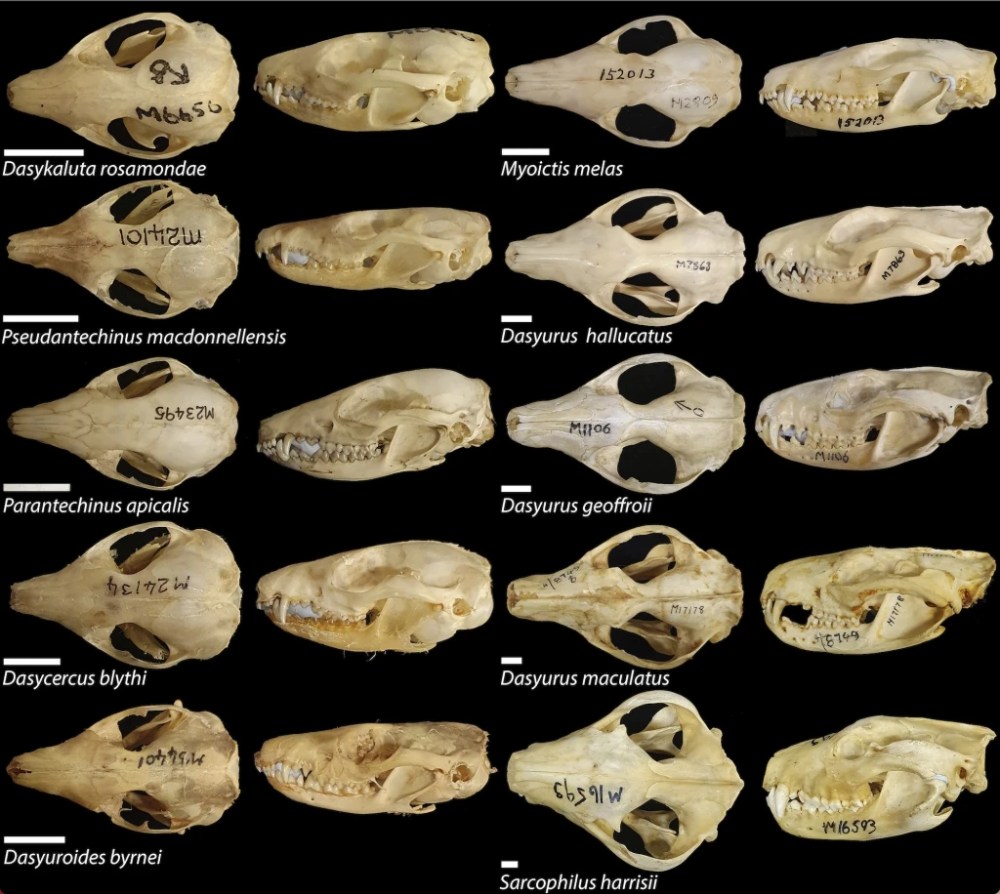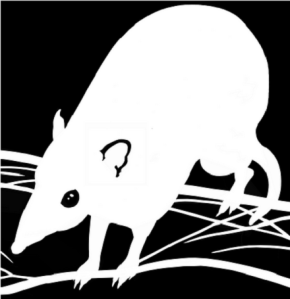By Nat Warburton. The relationship between what an animal eats and how big it is, is an interesting evolutionary problem. Herbivores seem to be able to get excessively big (think hippos, giraffe, elephants and our extinct marsupial friend diprotodon).
Indeed, large body size can an advantage to being a herbivore. Herbivores require large communities of gut microbes in order to chemically digest fibrous plant material, and so there are constraints on how small a leaf- eating herbivore can actually be. Small herbivores are generally more selective about picking only the most nutritious leaves and may supplement these with roots, fruits, fungi or insects.
The mechanical processing of leaves via chewing also requires a lot of effort, and big herbivores have the advantage of large skulls that support big, broad teeth for grinding up plant material.
Carnivores, on the other hand, have different problems. Chemically digesting animal protein (meat) is much simpler than breaking down plant fibre, so there is less effort put into chewing food… most carnivores swallow large chunks of meat whole.
Catching other animals to eat, however, requires sharp teeth and powerful jaw muscles. For this reason, there is a fairly strong pattern of the size of the carnivores and the size of its prey. While lions and polar bears will grapple with prey bigger than themselves, most small to medium sized carnivores will catch prey much smaller than their own body size. Usually, but not always…

In a recent study, we investigated the evolution of skull shape in the transition from insect-eaters to meat-eaters.
The dasyurid family of marsupials includes mouse-sized insect eating dunnarts and mardos, rat-sized mulgara (see Conversation article), carnivorous quolls and the bone- crunching Tasmanian Devil.
Among most of the species investigated, there is a strong pattern of prey- size getting larger with increasing body size of the predator, especially in things like quolls. As predators get bigger, the skulls scale up in such a way as to give them stronger jaws and wider gapes.
There are a few weirdos, though. Things than break the mould and punch well above their weight in terms of what (or who) they eat. The mightiest of these is the Little Red Kaluta (Dasykaluta rosamondae) who is grapples prey as big as itself. This pint-sized marsupial is definitely no pip-squeak, and is known to regularly kill and devour mice if they are unfortunate enough to end up in an enclosed space together.
But how can they do this with tiny jaws and teeth? We found that their skulls are much broader and more robust (chunky) compared to other mouse-sized marsupials.
This gives there jaws the ability to cope with stronger jaw muscles and larger bite forces, that they use to eat hard-shelled beetles and occasionally unsuspecting mice…
To find out more please see our open access article:
Warburton, N.M., Withers, P.C. and Martin, M. (2024), More than one way to eat a mouse: Skull shape variation within a monophyletic group of mammals (Marsupialia; Dasyurinae). J Zool, 322: 76-88. https://doi.org/10.1111/jzo.13124
